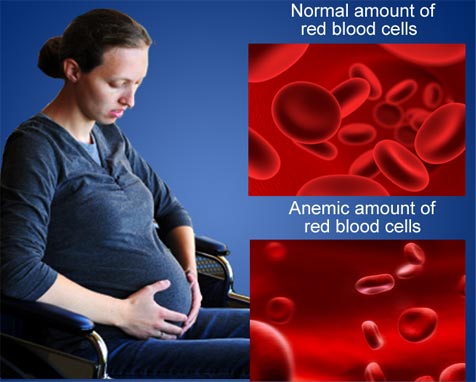
:max_bytes(150000):strip_icc()/GettyImages-182800841-5894f4825f9b5874ee438219.jpg)
Patients with cancer, HIV, or kidney disease often have severe anemia and require these injections. If a patient is severely anemic or has suffered a blood loss causing anemia, blood transfusions may help with fatigue.Įpogen and Procrit are two common injections given that stimulate the bone marrow to produce red blood cells. Patients being treated for anemia in the hospital may require supplemental oxygen for very low hemoglobin levels. Plan rest periods, delegate tasks to others, cluster activities together, prioritize activities when energy levels are highest. Fatigue Anemia Pain Care Plan Interventions Inquire about activities the patient can or cannot perform, the effect it has on their responsibilities and roles, and how they manage their symptoms. Assess the extent of fatigue in daily life. Treating the underlying cause of anemia should be a priority.ģ. These include pregnant patients, those with cancer, or autoimmune diseases. Assess for chronic conditions that worsen anemia.Ĭhronic conditions can cause and contribute to anemia. Patient will report an increase in energy and ability to perform tasksĪssess the patient’s complete blood count including red blood count and hemoglobin levels.Patient will verbalize techniques to conserve energy.Inability to maintain physical activityĪnemia nursing care plans expected Outcomes:.Patient will recognize the signs and symptoms of anemia and when to call their doctorĪ lack of oxygen-carrying red blood cells will result in decreased energy and fatigue.Īnemia nursing care plans & Diagnosis: Fatigue Anemia nursing care plans related to:.Patient will add three foods high in iron, B-12, and folic acid to their diet.
 Patient will display an improvement in iron and B-12 levels through lab testing. Lack of vitamin B12 and folate in the dietĪnemia nursing care plans as evidenced by:Īnemia nursing care plans expected Outcomes:. Iron-deficient and vitamin-deficient anemia can occur due to poor dietary intake or an inability to absorb nutrients.Īnemia nursing care plans & Diagnosis: Imbalanced Nutrition Anemia nursing care plans related to: Anemia Nursing Care Plans Imbalanced Nutrition: Less Than Body Requirements Anemia Nursing Care Plan Other types of anemia that may be encountered are vitamin-deficiency anemia (low levels of vitamin B12 or folate), aplastic anemia (the bone marrow stops making blood cells), and hemolytic anemia (when blood cells are destroyed faster than they are replaced). This can result from blood loss, pregnancy, or poor absorption. Iron-deficiency anemia is the most common type of anemia and is appropriately named, as it is a lack of iron in the body. Pernicious anemia is caused by faulty absorption of vitamin B 12 from the GI tract, which is required in the production of red blood cells.Īnemia occurs when there are not enough red blood cells or red blood cells do not function properly resulting in low hemoglobin and a lack of oxygen throughout the body. This causes a depression of all blood elements: (pancytopenia): red blood cells (anemia), white blood cells (leukopenia), and platelets (thrombocytopenia).
Patient will display an improvement in iron and B-12 levels through lab testing. Lack of vitamin B12 and folate in the dietĪnemia nursing care plans as evidenced by:Īnemia nursing care plans expected Outcomes:. Iron-deficient and vitamin-deficient anemia can occur due to poor dietary intake or an inability to absorb nutrients.Īnemia nursing care plans & Diagnosis: Imbalanced Nutrition Anemia nursing care plans related to: Anemia Nursing Care Plans Imbalanced Nutrition: Less Than Body Requirements Anemia Nursing Care Plan Other types of anemia that may be encountered are vitamin-deficiency anemia (low levels of vitamin B12 or folate), aplastic anemia (the bone marrow stops making blood cells), and hemolytic anemia (when blood cells are destroyed faster than they are replaced). This can result from blood loss, pregnancy, or poor absorption. Iron-deficiency anemia is the most common type of anemia and is appropriately named, as it is a lack of iron in the body. Pernicious anemia is caused by faulty absorption of vitamin B 12 from the GI tract, which is required in the production of red blood cells.Īnemia occurs when there are not enough red blood cells or red blood cells do not function properly resulting in low hemoglobin and a lack of oxygen throughout the body. This causes a depression of all blood elements: (pancytopenia): red blood cells (anemia), white blood cells (leukopenia), and platelets (thrombocytopenia).  Aplastic anemia, on the other hand, is caused by damage to hematopoietic stem cells and the bone marrow. In iron deficiency anemia, it is a hypochromic, microcytic type of anemia, resulting from inadequate iron supplementation, chronic blood loss seen in men and older women who have ulcers or GI tumors and younger women with heavy menstruation. As a result, the amount of oxygen delivered to body tissues is also lessened.Īnemia nursing care plans may be classified in many ways: The hemoglobin level is lower than normal, reflecting a decrease in number or derangement in the function of red blood cells within the circulation. Anemia is the most common hematologic disorder.
Aplastic anemia, on the other hand, is caused by damage to hematopoietic stem cells and the bone marrow. In iron deficiency anemia, it is a hypochromic, microcytic type of anemia, resulting from inadequate iron supplementation, chronic blood loss seen in men and older women who have ulcers or GI tumors and younger women with heavy menstruation. As a result, the amount of oxygen delivered to body tissues is also lessened.Īnemia nursing care plans may be classified in many ways: The hemoglobin level is lower than normal, reflecting a decrease in number or derangement in the function of red blood cells within the circulation. Anemia is the most common hematologic disorder.


:max_bytes(150000):strip_icc()/GettyImages-182800841-5894f4825f9b5874ee438219.jpg)




 0 kommentar(er)
0 kommentar(er)
